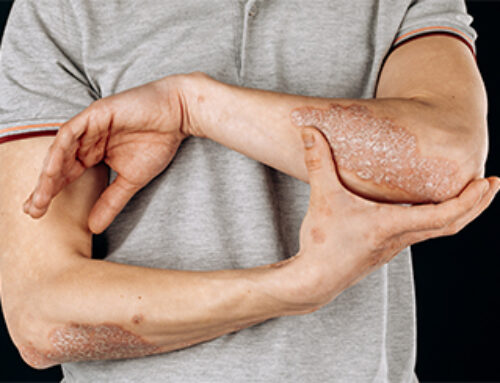Nail bed infection, also called as Paronychia, is an infection of the skin around the fingernails and toenails, caused either by bacteria or a type of fungus (candida) or both. Depending on the cause of the infection, it may start slowly and last for few weeks or may start suddenly and last for only few days. This nail bed infection can become severe and even result in a partial or complete loss of the nail if it is not given timely treatment.
The causes can include but not limited to plucking out a hangnail, recurrent sucking of a finger, clipping a nail very short or trimming the cuticle (the skin around the sides and bottom of the nail), getting injured after a manicure, using from chemicals in the glue used with artificial nails, having hands in water a lot (as from a job washing dishes in a restaurant). Certain conditions like diabetes also make nail bed infections more likely.
The infected area around the nail can get red, swollen, and painful. Sometimes a pus-filled blister may form. If the infection has been there a long time, there might be a change in the nail shape, color or even texture. The nail might not be its exact usual shape and it even can look as if it is coming away from the nail bed.
Home treatments can very often be successful in treating mild cases of nail bed infection. In case, of pus-filled blister, the patient can soak the infected area in warm water several times of the day and dry it thoroughly. The soaking encourages the area to drain on its own. If the pain is very severe or if it isn’t responding to home treatments, the doctor may prescribe an antibiotic. There might be a need to have blisters or abscesses drained of fluids to relieve discomfort and speed healing. When draining it, the doctor can also take a sample of pus from the wound to determine what is causing the infection and how best to treat it.Other topical treatments that reduce inflammation may be given to bring relief to the patient from the pain and swelling. In severe cases, the patient may need surgery to remove part of the nail.
Good hygiene is important for preventing nail-bed infection. Keeping hands and feet clean and dry to prevent bacteria from entering between nails and skin; avoiding trauma caused by biting, picking, manicures, or pedicures can help in preventing acute infections.
Few homeopathic medicines that can be given to cure nail bed infections are-
Antimonium Crudum is indicated in nail bed infection with pus and which has covering of yellow-colored crust, caused mainly due to fungus. The nails are associated with thick horny callosities of the skin. It may be accompanied by pimples are mainly on cheeks that suffer from itching and burning sensation which aggravates in night and horny warts on the hands and soles. Patient has gastric derangement, thick coated white tongue. Craving sour food. The nails grow out of shape and its original shape gets distorted. The patient seems to get unusually irritated at the slightest small things. The nails get split and grow at a very slow pace.
Silicea is indicated in nail bed infection that leads to disfigurement and sharp pain, caused by fungus. Formations of pus in pimples are offensive. Nails that grow inwards and may be surrounded with flesh and pus. Patients cannot tolerate cold in any form. Skin aggravate in winter. Patient has profuse perspiration on head and cold extremities. Skin is delicate and pale. Obstinate constipation, swollen lump glands and acne on forehead and cheeks. There may be foul smelling sweat from the hands,armpits, and feet.
Graphites is a very good remedy for nail disorders characterized by inward growth of the nails, especially of the toe nails, which oozes thick and sticky discharge. An obese patient who suffers from constipation and they are more likely to be sensitive towards cold weather. Affected area skin is hard and rough whereas unaffected area it is dry. Female who have eczema associated with menstrual difficulties like late and scanty menses these is the best remedy. The pain is sharp and the patient is aggravated by touch. There is thickening and deformity of nails that has a tendency to break easily. Nail infection in people with cracked finger tips.
Bufo Rana is a very effective homeopathic remedy for treating nail infection, that turn the nails bluish or blackish in color, with occasional formation of pus, and occasionally deep dull pain that runs upward till the axilla (armpit).







